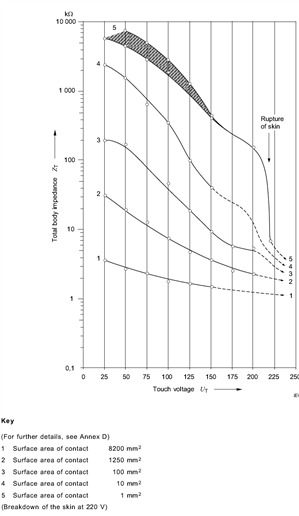For example, 110% of 230= 253 volts. Assuming L and PE are of the same size and material, indirect contact touch voltage is 126.5 volts. Would 0.33 seconds not appear more realistic?
From IEC 61200-413




We're about to take you to the IET registration website. Don't worry though, you'll be sent straight back to the community after completing the registration.
Continue to the IET registration site